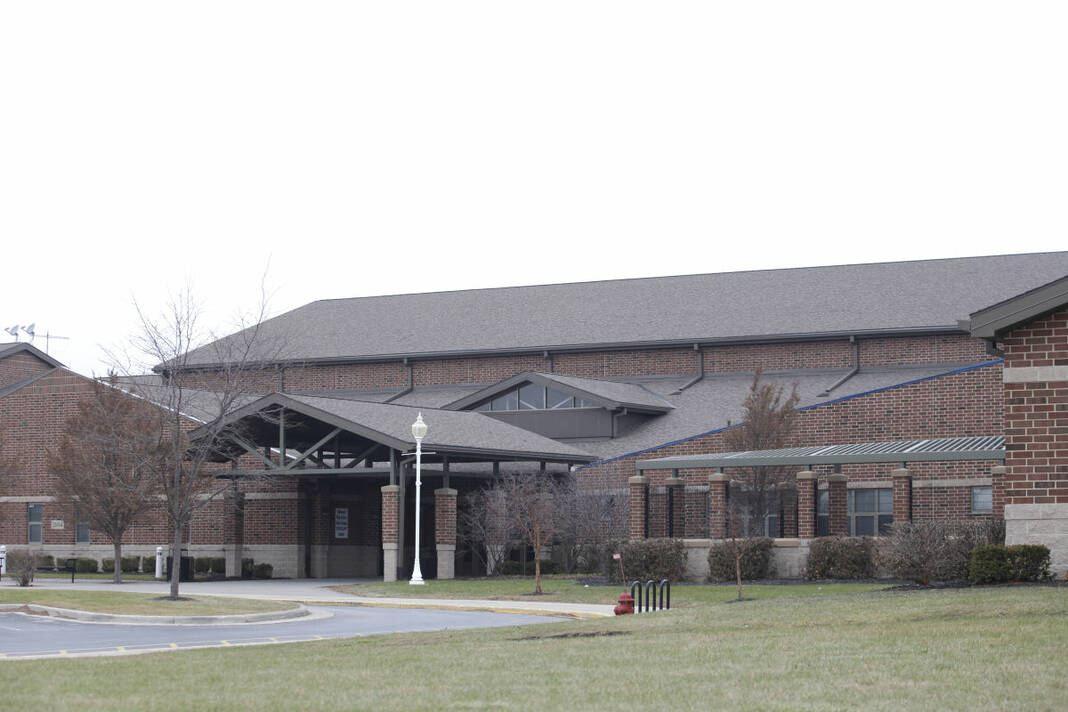
BLOOMDALE – The cafeteria debt at Elmwood Local Schools has increased by $1,000 a week for the past several weeks.
Treasurer Jenalee Niese told the school board at its Nov. 7 meeting that after the first nine weeks of the school year, students owed $7,800 in back cafeteria payments.
She said she has been getting the numbers from the food service director, and every week for the past several weeks, the amount has gone up $1,000.
Niese said the debt, combined with a 15% increase in food costs, a 34% decrease in federal lunch reimbursements and a 29% decrease in federal breakfast reimbursement, will require her to move an estimated $150,000 from the general fund into the cafeteria fund at the end of the year to keep it out of the red.
“We’ll know more by May. Hopefully the legislators will do something. Every school will be in the same situation if they don’t offer free lunches or have a plan,” Niese said.
“There’s nothing we can do if a kid doesn’t have money,” said Superintendent Tony Borton. “We still have to provide a lunch and it becomes our cost.”
Board member Jeremie Pennington asked about the accountability of students to pay their debts.
Borton said the bad debt will be put in the student’s account and they will have to pay it in order to graduate.
“What worries me is if we’ve got kids who have $500 or $600 in debt from kindergarten on, I don’t know how they’ll ever pay it when it comes to graduation time,” he said. “We’ve never had this. I’m really worried about the future.”
Board President Debbie Reynolds asked if anything was being done to collect even partial payments.
An email goes out weekly to families that have a negative balance, and families that are struggling financially are encouraged to fill out a free and reduced lunch application, Borton said.
“The only thing we haven’t done is fill it out for them,” Niese said about the form.
Reynolds asked if a night could be set to help families fill out the form, and Borton made a note of that suggestion.
Niese said some of the families that may have qualified for free and reduced meals last year do not qualify this year and many have never had to fill out the form as meals have been free the last two years.
The U.S. Department of Agriculture had been offering a free school meals program, but canceled that program for the start of this school year.
“I want to help those who need help,” said board member Ryan Lee.
Lee is an administrator at Penta Career Center, which is serving meals to students free of charge.
Reynolds challenged everyone in the community to find creative ways to help those families that have kids coming to school on Mondays that haven’t eaten all weekend.
The board learned that the middle school student council will be sending elementary students home with food starting after Thanksgiving break with the hope of adding more grades in the future.
Niese also gave the district’s five-year forecast.
Revenues will increase only slightly over the next five years and won’t keep up with expenses, starting this year.
Income tax collections for the next five years are projected to increase $264,645 to $2.84 million in fiscal year 2027. The district’s two income taxes contribute 14% of collected revenue.
Property tax revenues are projected to increase 0.5% annually until fiscal year 2024, when real estate reappraised values will be collected. She has projected an increase of $125,337 in this area by fiscal year 2027 but is expecting a larger increase due to the county’s reappraisal.
Niese said a property tax for the band room renovation will fall off at the same time reevaluations are done and she is hoping they will offset one another.
Pipeline revenue will go up and then back down again for a net loss of $2,000 by fiscal year 2027 with collections of $2.44 million.
Local revenues make up 40.9% of the district’s operating budget, Niese said. Of that, 30% is from income taxes, 36% is from real estate and 33% is from pipeline payments.
State funding, which contributed 45.4% of the district’s revenues, will stay consistent between $7.12 million and $7.15 million during the next five years.
Niese also told the board that the district is spending $11,569 per pupil and the state’s fair school funding plan is paying for $7,351 of that.
Overall revenues are expected to increase, from $16.13 million this year to $16.60 million in fiscal year 2027.
Salaries make up 56% of expenditures while benefits add another 26%, Niese said.
“Our product is our people and educating our students,” she said. “Fifty-six percent is normal.”
Salaries are expected to increase from $9.37 million this year to $10.92 million in fiscal year 2027.
Benefits are projected to increase from$4.26 million this year to $5.26 million in fiscal year 2027.
“Benefits are going through the roof right now and I don’t know if it’s going to steady out,” she said.
Expenditures are expected to increase from $16.81 million this year to $19.51 million in fiscal year 2027.
Revenue became less than expenditures beginning this year due to the wage increases, medical expenses and the expiration of COVID relief grants, which will require the district to begin spending a portion of its carryover balance, Niese said.
The cash balance at the end of this year is expected to be $6.91 million, but will fall to negative $754,331 in fiscal year 2027.

